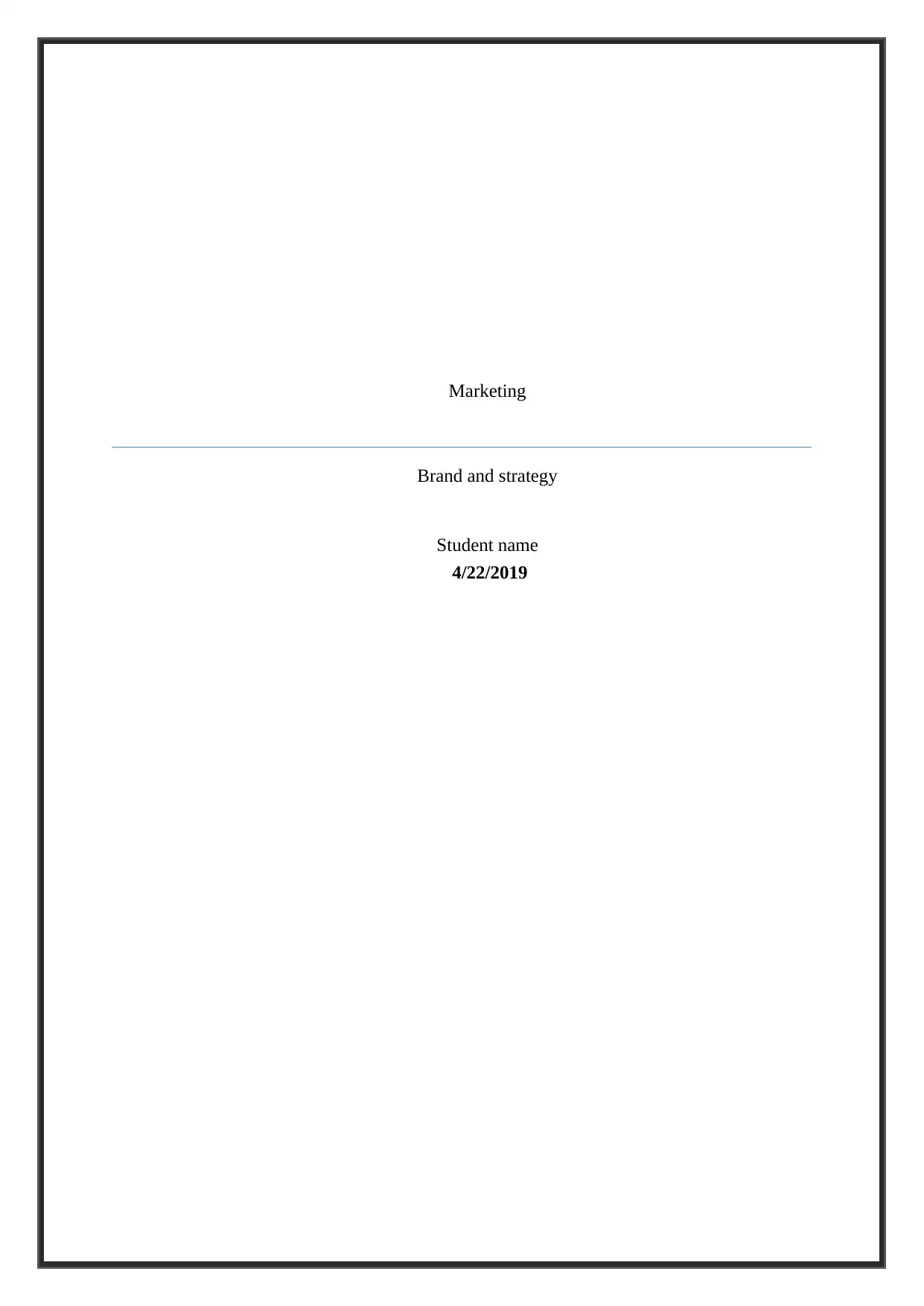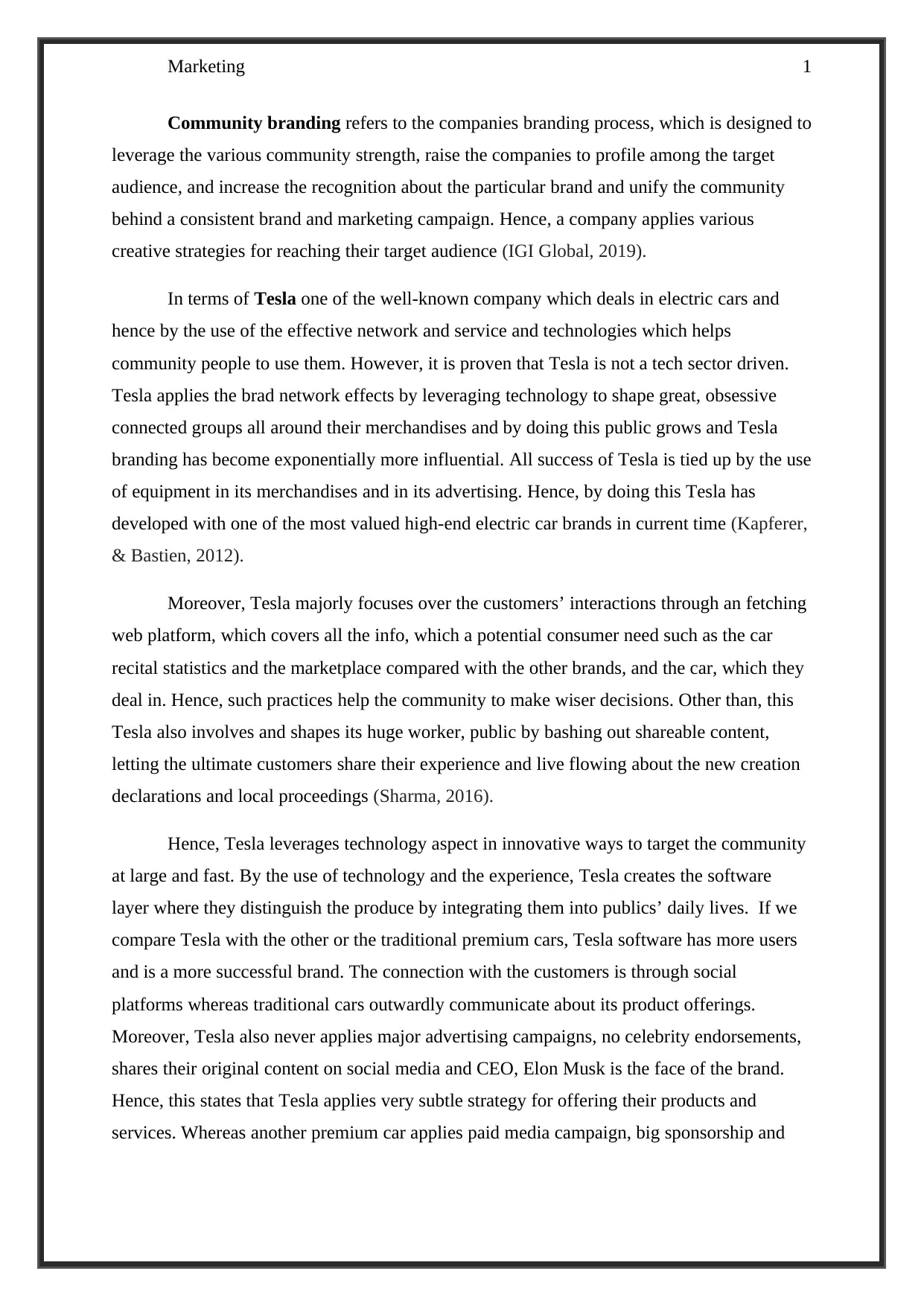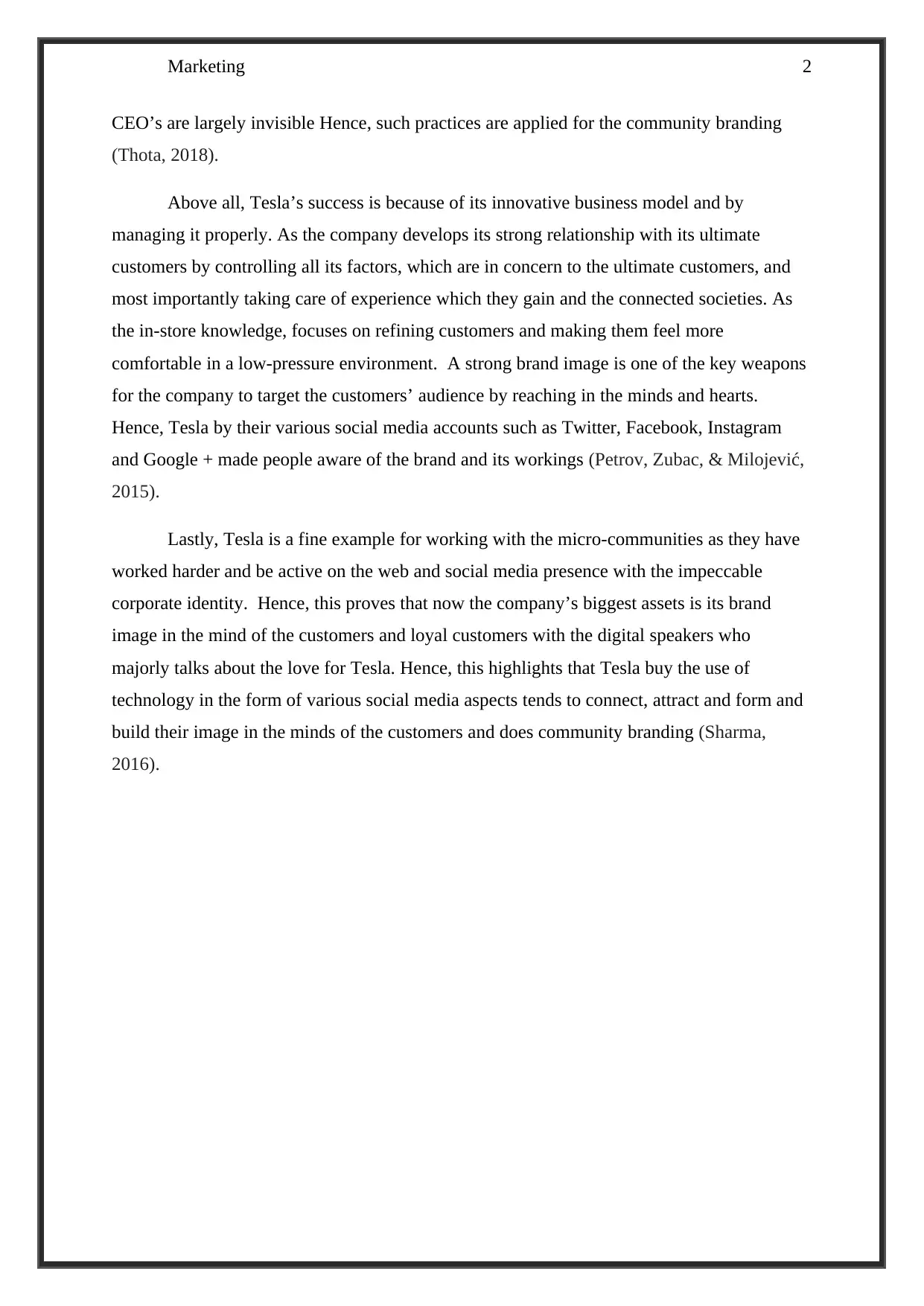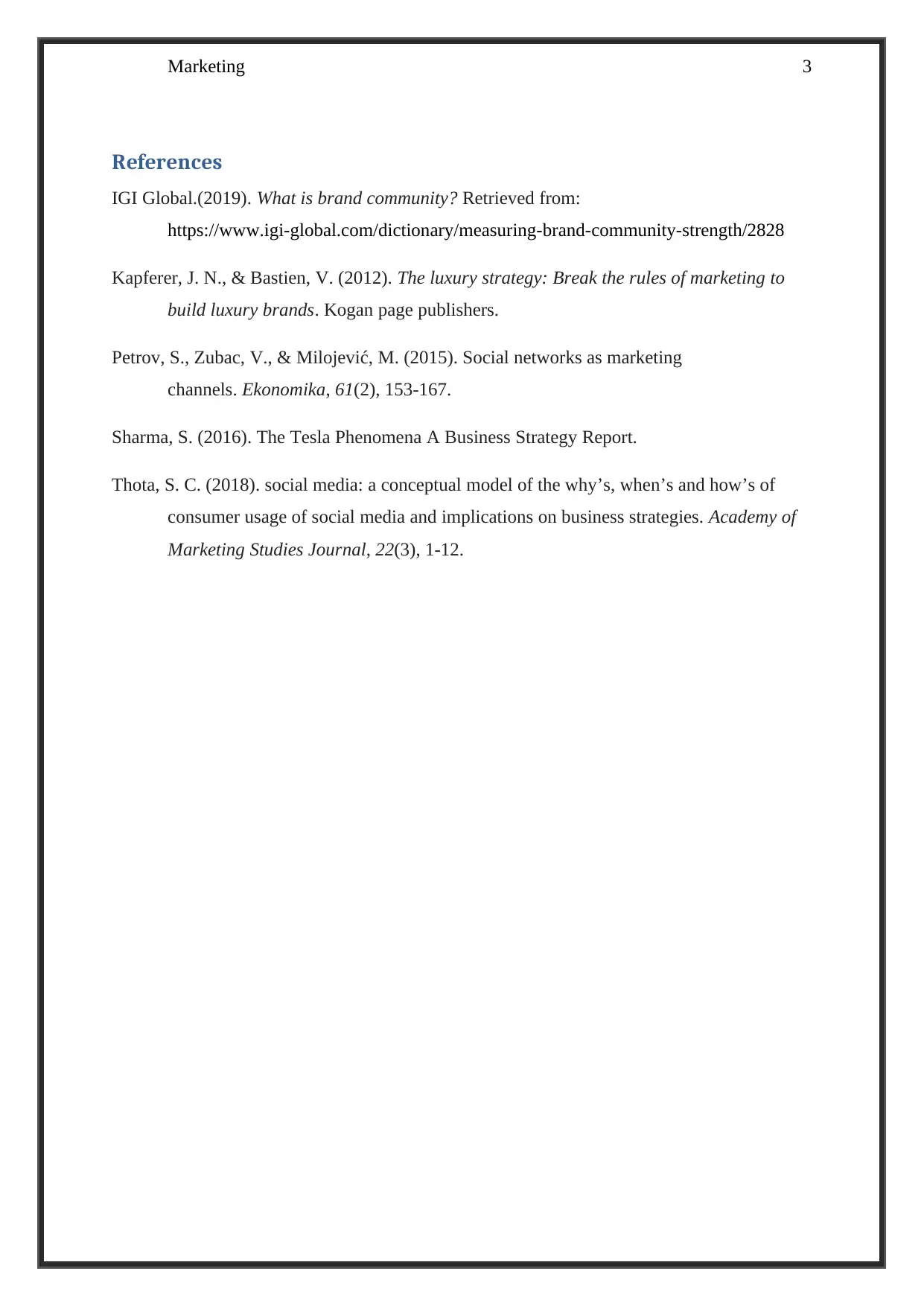Marketing 1 Report: Tesla's Community Branding Strategy and Analysis
VerifiedAdded on 2023/02/01
|4
|908
|60
Report
AI Summary
This report analyzes Tesla's community branding strategy, highlighting how the company leverages its community strength to enhance its brand image and increase recognition among its target audience. The report delves into Tesla's innovative use of technology, effective network and service, and social media platforms to engage customers and build brand loyalty. It examines Tesla's approach to customer interaction through its website, sharing valuable information such as car performance statistics and market comparisons. Furthermore, the report explores Tesla's unique marketing tactics, including the absence of major advertising campaigns and celebrity endorsements, relying instead on original content on social media and the CEO as the brand's face. The analysis also includes references to Tesla's business model, customer relationships, and the importance of a strong brand image in targeting the customer audience. Overall, the report provides a detailed overview of Tesla's community branding, showcasing its success in connecting with, attracting, and building its image in the minds of its customers.
1 out of 4











![[object Object]](/_next/static/media/star-bottom.7253800d.svg)